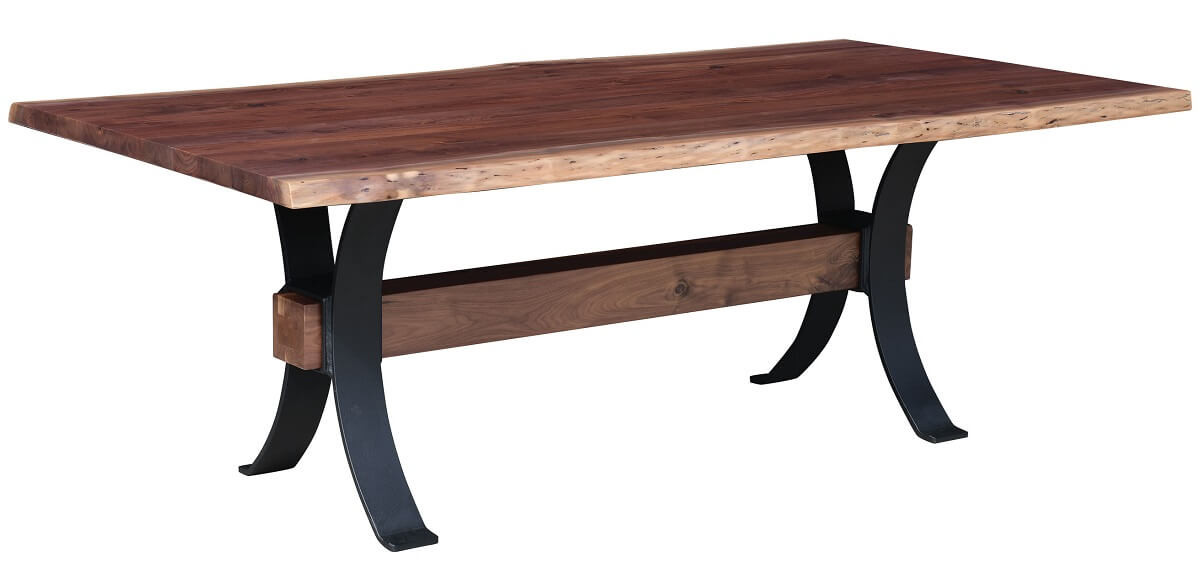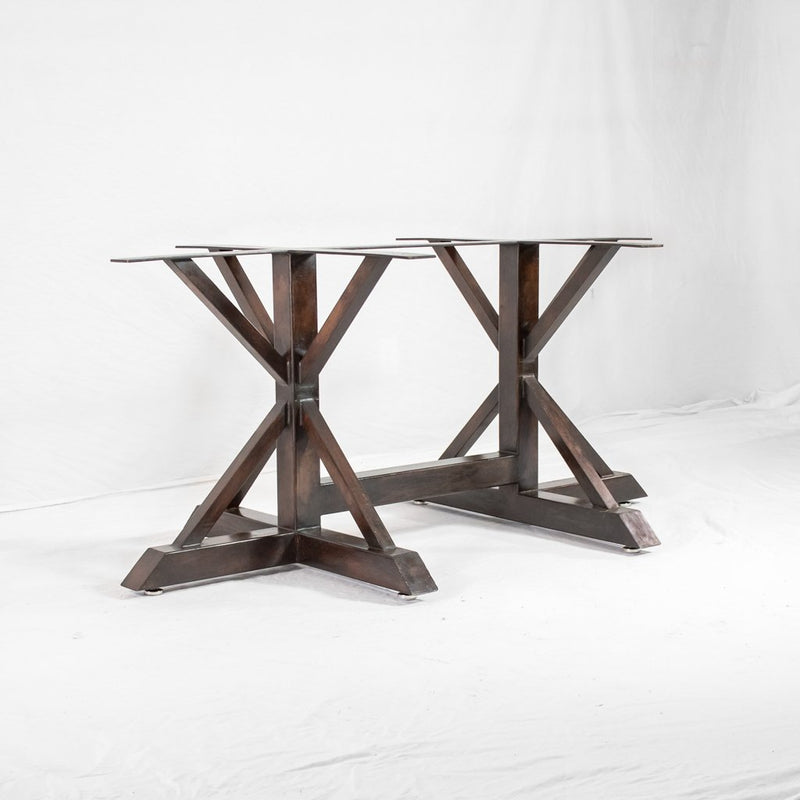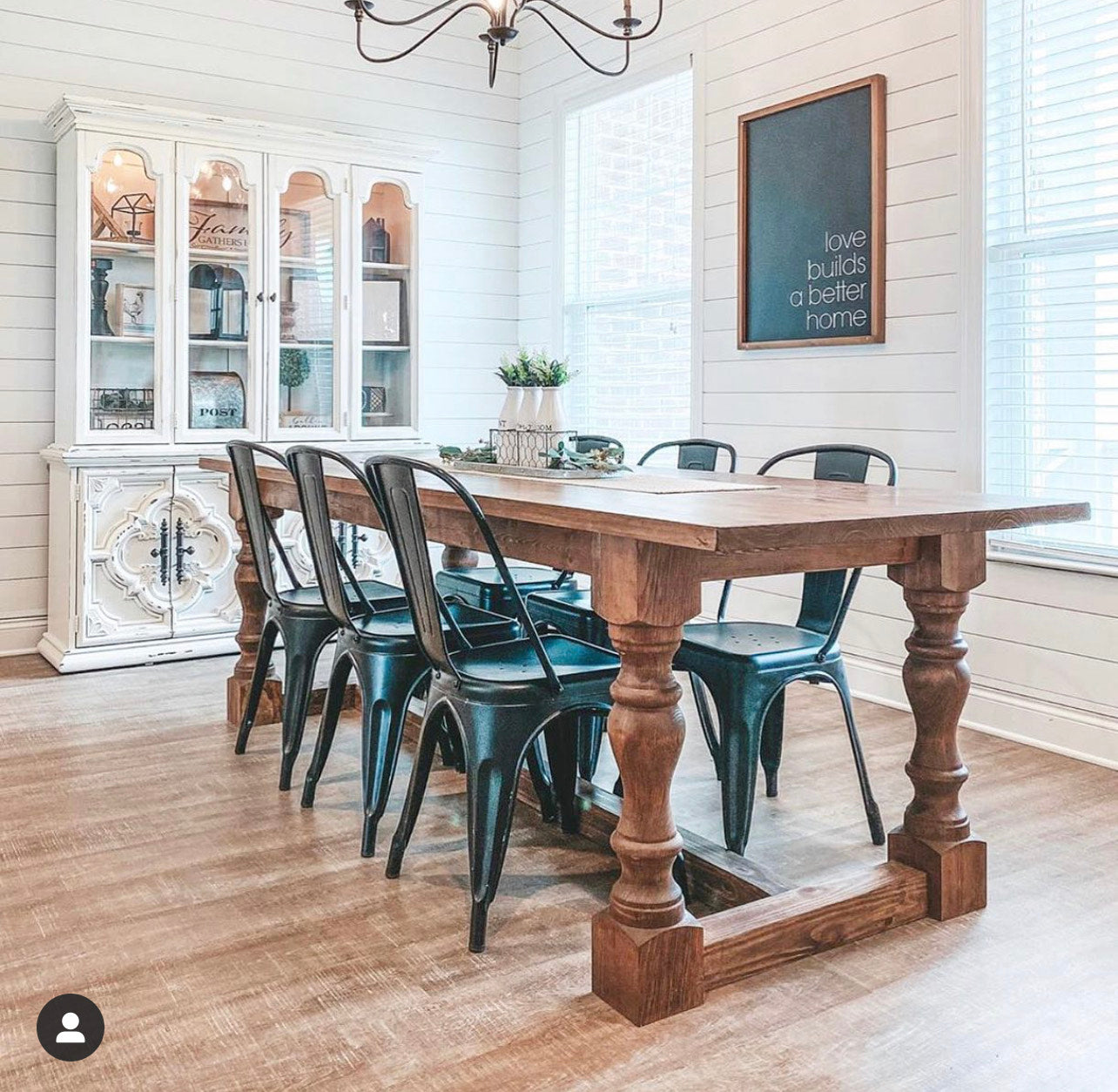Upgrade Your Furniture with Custom Dining Room Table Legs
Upgrade Your Furniture with Custom Dining Room Table Legs
Blog Article
Exactly How to Pick the Perfect Dining Space Table Legs for Your Home Décor
Selecting the optimal dining area table legs is a nuanced process that requires mindful consideration of different components, including your room constraints, aesthetic choices, and useful needs. The interplay in between dimensions, materials, and styles can significantly affect the atmosphere of your eating area, making it crucial to approach this decision carefully.
Assess Your Dining Area
Examining your eating area is crucial for choosing the right table legs that complement both visual appeals and capability. Begin by gauging the dimensions of your eating area, including ceiling elevation, flooring room, and closeness to other furnishings. This details will certainly help figure out the ideal size and elevation of your eating table, which directly affects the choice of table legs.
Following, think about the design and design of your eating area. An open-concept design may benefit from table legs that supply aesthetic agility, such as slender steel or acrylic options. Alternatively, an extra typical setting could ask for sturdy wood legs that offer a sense of durability.
Examine the existing shade scheme and products in your dining location. Balancing the table legs with these aspects produces a cohesive look that boosts the general design.
Ultimately, a comprehensive analysis of your eating area will guide you in making an informed choice, guaranteeing that your table legs not just boost the aesthetic charm however likewise serve sensible objectives.
Consider Your Design Preferences
When selecting dining-room table legs, it is vital to assess your personal style preferences, as they substantially influence the overall visual of your dining area. Your choice of table legs can either complement or comparison with existing design, making it critical to align them with your favored interior decoration motif.
If your home leans towards a modern visual, think about streamlined steel or minimal wood legs that offer a clean, clean appearance. For a more conventional approach, ornate wood legs with elaborate carvings can include a touch of style and elegance. Industrial styles benefit from robust, raw materials such as redeemed timber and steel mixes, mirroring a sturdy appeal.
In addition, farmhouse and rustic styles commonly favor tough, chunky legs that stimulate a sense of warmth and comfort. Alternatively, if your decoration is diverse, you might select unconventional shapes or a mix of materials to produce aesthetic interest.

Evaluate Product Options
The selection of product for dining space table legs plays a crucial role in both toughness and aesthetic allure. Usual products consist of wood, steel, and composite alternatives, each offering unique attributes that can affect the overall appearance and durability of your table.
Timber is a classic selection, recognized for its heat and adaptability. Hardwoods like oak and walnut provide remarkable stamina and can be finished in numerous discolorations to match any kind of decoration. Softwoods like ache are a lot more susceptible to scrapes and dents, making them less ideal for high-traffic areas.
Metal legs, often crafted from steel or light weight aluminum, emanate modernity and commercial appeal. They are immune and extremely durable to wear, making them ideal for families with children or frequent gatherings (dining room table legs). In addition, metal can be ended up in various shades, boosting the personalization opportunities
Composite products, such as MDF or laminate, offer price and diverse layouts. While official statement typically less long lasting than solid timber or metal, they can still give a stylish appearance and are typically simple to maintain.
Eventually, the material you select should line up with your way of living, aesthetic choices, and the level of usage your table will certainly experience.
Determine Elevation and Dimension
Selecting the appropriate height and size for your dining-room table is crucial for both performance and convenience. The standard height for eating tables typically ranges from 28 to 30 inches, permitting adequate legroom for most people when seated. It is essential to take into consideration the dimensions of your dining room and the types of chairs you prepare to utilize.

Furthermore, take original site into consideration the proportions of your dining-room. A larger table in a large location can develop a grand setting, while a smaller sized table functions well in more intimate settings. Ultimately, the right height and size will balance with your general design and boost the eating experience for you and your visitors.
Explore Modification Opportunities

In addition, the layout of the legs can be tailored to fit numerous styles, such as rustic, contemporary, or industrial. Conical legs can evoke a mid-century modern-day feeling, while chunky, block-style legs might reverberate with typical or farmhouse decor.
House owners can likewise check out shade finishes, from natural wood spots to paint, enabling them to match or comparison with the table top and surrounding decoration.
Additionally, leg height can be adapted to fit particular seating arrangements or individual choices, boosting both comfort and capability.
Lastly, one-of-a-kind decorations, such as makings or decorative braces, can additionally customize the table legs, making the eating experience not just a declaration however a meal item in the home. By thinking about these customization options, home owners can produce a dining-room table that genuinely reflects their originality.
Conclusion
Picking the perfect dining-room table legs requires cautious consideration of different elements, including the dimensions of the eating area, design choices, product resilience, and preferred elevation. Customization options better enhance the capacity to accomplish a cohesive visual that complements the total decor. By systematically evaluating these elements, home owners can make certain that the chosen table legs not only satisfy useful needs yet also contribute favorably to the eating experience and atmosphere of the home.
Picking the perfect eating area table legs is a nuanced procedure that requires careful consideration of various components, including your area restraints, visual preferences, and sensible needs.Examining your dining space is essential for choosing the right table legs that complement both looks and capability.When determining size, determine the location where the table will certainly be positioned to guarantee it fits pleasantly, enabling for at least 36 inches of clearance around the table for easy activity. A bigger table in a spacious location can develop a grand setting, while a smaller sized table functions well in even more intimate setups.Choosing the suitable dining room table legs requires mindful consideration of various aspects, including the measurements of the eating room, design choices, product durability, and wanted height.
Report this page